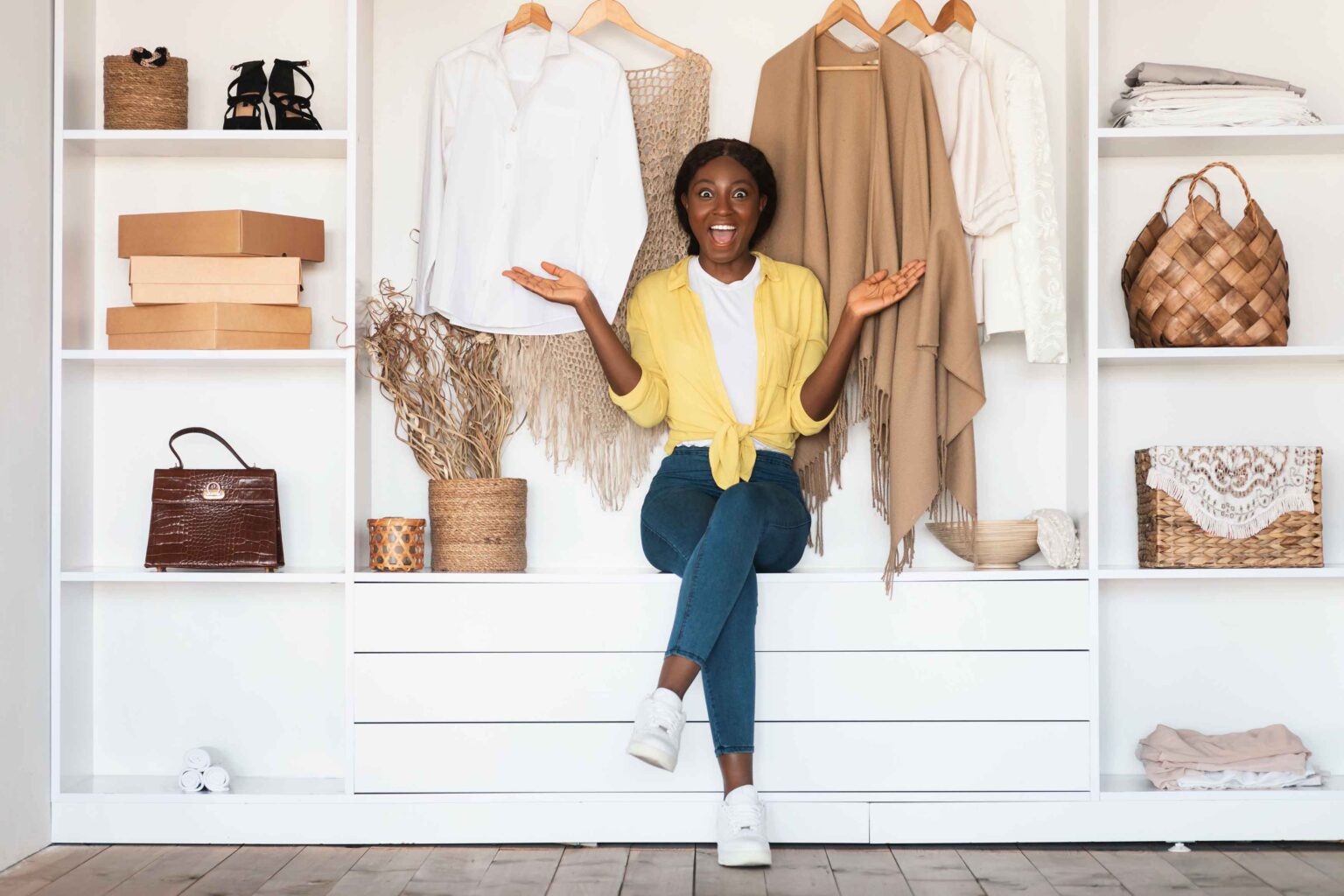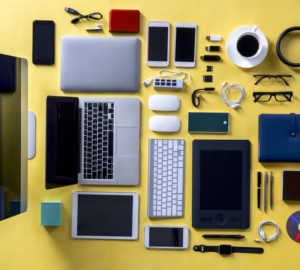Tired of a cluttered closet yet still feeling like you have “nothing to wear”? The concept of a capsule wardrobe might just be your fashion solution. A capsule wardrobe is a curated collection of essential, versatile clothing items that can be mixed and matched to create numerous outfits for various occasions. In Kenya, with its diverse climates and social calendars, building a functional capsule wardrobe can simplify your life, save you money, and make getting dressed a breeze.
At Retail Place, we’ll guide you through creating a capsule wardrobe that works for Kenya’s unique seasons and your lifestyle.
Why Embrace a Capsule Wardrobe in Kenya?
- Saves Time: No more endless staring into a full closet. Every piece works together, making outfit selection quick and easy.
- Saves Money: You invest in high-quality, versatile pieces that last longer, reducing the need for impulse buys and trendy items that quickly go out of style.
- Reduces Decision Fatigue: Less time spent deciding what to wear means more mental energy for other important tasks.
- Promotes Sustainability: By buying fewer, more durable items, you contribute less to fast fashion waste, aligning with growing environmental consciousness in Kenya.
- Enhances Personal Style: With fewer items, you become more intentional about what you own, truly defining and refining your personal aesthetic.
Step-by-Step Guide to Building Your Kenyan Capsule Wardrobe
Step 1: Declutter and Assess Your Current Wardrobe
Before adding anything new, understand what you already have.
Empty Your Closet: Take everything out. Yes, everything!
Sort into Piles:
- Love & Wear Often: These are your keepers, the foundation.
- Maybe/Seasonal: Items you like but rarely wear, or those specific to a very particular event.
- Donate/Sell: Items that don’t fit, are damaged beyond repair, no longer suit your style, or haven’t been worn in over a year.
- Repair: Items needing minor fixes (missing buttons, small tears).
Identify Your Lifestyle Needs: Are you mostly in an office, working from home, a student, active outdoors, or juggling family life? Your wardrobe should reflect your daily activities. Consider the balance between formal, smart casual, and casual wear for your life in Kenya.
Read: What’s the Difference Between Casual and Smart Casual Wear?
Step 2: Define Your Colour Palette
A cohesive colour palette is crucial for mix-and-match versatility.
Choose Your Neutrals: Select 2-4 core neutral colours that flatter you and can be easily combined. Popular choices include:
- Black: Timeless, sleek.
- Navy Blue: A softer alternative to black, very versatile.
- White/Cream: Crisp, essential for layering.
- Grey: Sophisticated, easy to combine.
- Brown/Khaki/Beige: Earthy tones, excellent for daytime and blends well with African landscapes.
Add Accent Colours: Choose 1-3 accent colours that you love and that complement your neutrals. These can be vibrant (e.g., emerald green, cobalt blue, burnt orange) or muted, adding personality.
Consider African Prints: Incorporate a few versatile African print pieces (Kitenge, Ankara, Kanga) that fit your chosen colour scheme. A well-tailored Kitenge blazer or a versatile African print dress can be dressed up or down.
Read: Essential Guide to Understanding Different Types of Fabrics in Kenya
Step 3: Select Your Core Pieces (The Essentials)
Focus on quality over quantity. Aim for versatile items that can be layered. A typical capsule wardrobe has between 30-50 items, including clothing, outerwear, shoes, and bags (excluding intimates, sleepwear, and activewear).
General Essentials for Kenya (adapt to your climate/lifestyle):
Tops (6-10 pieces):
- 2-3 High-quality basic t-shirts (neutral colours)
- 2-3 Versatile blouses/button-down shirts (e.g., crisp white, light blue, a simple pattern)
- 1-2 Polo shirts (for smart casual for men)
- 1-2 Lightweight knit tops/cardigans (for cooler mornings/evenings)
- For women: Consider 1-2 dressy tops for evening.
Bottoms (4-6 pieces):
- 1-2 Well-fitting pair of dark-wash jeans (versatile for casual and smart casual)
- 1-2 Tailored trousers (chinos, straight-leg pants – neutral colours)
- 1-2 Versatile skirts (midi, A-line – for women)
- 1 pair of smart shorts (for casual warmer days, if appropriate for your lifestyle)
Dresses/Jumpsuits (2-4 pieces – for women):
- 1 Versatile “little black dress” or similar neutral dress
- 1-2 Everyday dresses (e.g., a comfortable maxi dress, a stylish midi dress)
- 1 Jumpsuit (can be dressed up or down)
Outerwear (2-3 pieces):
- 1 Lightweight jacket (e.g., denim jacket, utility jacket, light bomber)
- 1 Blazer (a versatile neutral for smart casual/work)
- 1 Light rain jacket or stylish trench coat (for rainy seasons)
- For cooler regions: A warm cardigan or a light fleece jacket.
Shoes (3-5 pairs):
- 1 pair of comfortable, stylish walking shoes/sneakers
- 1 pair of versatile flats/loafers/smart sandals
- 1 pair of dressier shoes (heels, dress shoes – for formal occasions)
- For men: Casual sneakers, smart loafers, dress shoes.
Bags (2-3 pieces):
- 1 Everyday practical bag (tote, crossbody)
- 1 Smaller, dressier bag for evenings or formal events
Step 4: Accessorize Thoughtfully
Accessories are where you inject personality without clutter.
- Scarves: Versatile for warmth, style, or sun protection.
- Belts: Define your waist, add polish.
- Jewellery: Few key pieces that elevate outfits (e.g., classic watch, versatile earrings, simple necklace).
- Sunglasses: Practical and stylish.
Read: Beginner’s Guide to Accessorizing Your Outfit in Kenya
Step 5: Adapt for Kenya’s Seasons
While Kenya doesn’t have extreme four seasons like temperate climates, it has distinct weather patterns that influence dressing:
- Hot & Dry Season (Jan-Feb, Sept-Oct): Focus on breathable fabrics like cotton, linen, and light blends. Lighter colours are preferred. Keep your lighter tops, dresses, and shorts prominent.
- Long Rains (March-May): Incorporate a good quality lightweight rain jacket, closed-toe shoes that can handle moisture, and quick-drying fabrics. Layers are key as temperatures can drop.
- Cool Season (June-August, especially Nairobi/Highlands): Bring out your warmer layers like light sweaters, cardigans, and a slightly thicker jacket. Long trousers and closed shoes are essential.
- Short Rains (Nov-Dec): Similar to the long rains but often less intense. Layers and lightweight rain protection remain important.
Step 6: Maintain Your Capsule
- Shop with Intention: Only buy something new if it genuinely fills a gap in your capsule and works with at least 3-5 existing items.
- Quality Over Quantity: Invest in well-made pieces that will withstand frequent wear and washing.
- Regular Review: Every few months, assess your capsule. Are there items you’re not wearing? Do you need to swap out seasonal items?
Building a capsule wardrobe is a journey, not a destination. It’s about finding what truly works for you and your unique life in Kenya, leading to a more intentional, sustainable, and stress-free approach to fashion.









